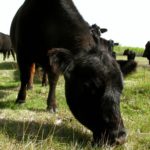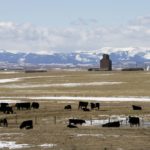
Forages

An ecological approach to forage research
Top AAFC research scientist shares his thoughts on growing forages

A plug for grass-legume mixes for grazing
An ideal pasture depends on the goals of the producer

Forage testing more complicated, but rations more accurate
Forage testing has evolved significantly in the past three to five years, with more precise tools for livestock ration development

Putting science into grass management
The Grazing Response Index scores foliage removal, grazing period and recovery time

Spurge purge tests bovine palates
Goats and sheep can eat leafy spurge. Can cattle be trained to do the same?

Don’t call it ‘cover,’ call it ‘feed’
How sacrificing some silage yield can gain another six to 10 tons of forage per acre

My cover crop
Grazing with Steve Kenyon

Pasture blends
Research on the Record with Reynold Bergen

Grass guys developing a forage carbon offset protocol
Forages: News Roundup from the February 2018 issue of Canadian Cattlemen




